In happy peacetime, nothing really regulated urban traffic yet. The rule was that the cars had to drive on the left. Pedestrians were strictly separated from other road users in Budapest only on the bridges, although they required a direction of travel there.
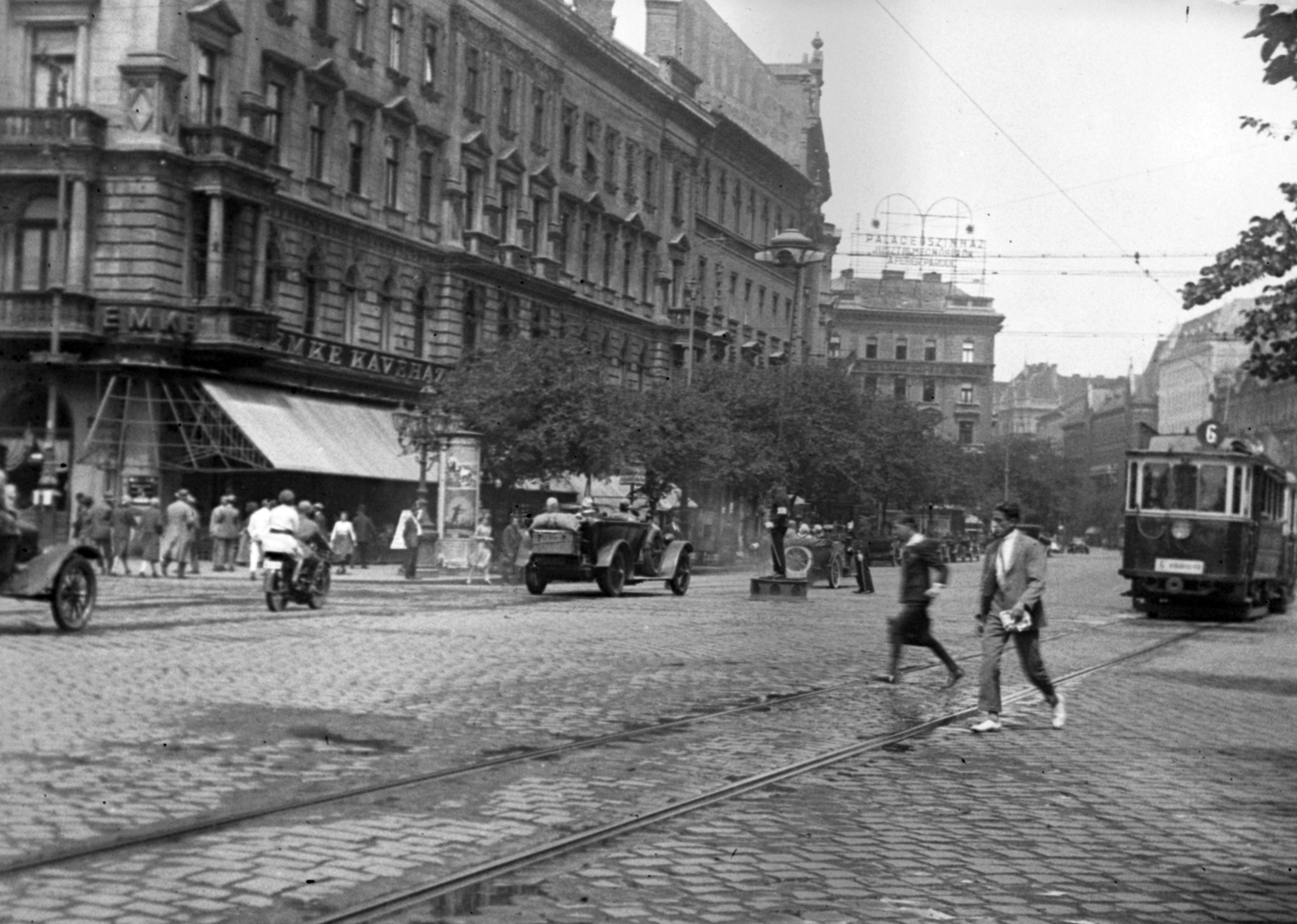
The first traffic light was set up at the intersection of the Outer Ring Road and Rákóczi Road (Photo: Fortepan/No.:19188)
It was only natural for pedestrians to walk down the road, moving from one sidewalk to another — where there was a sidewalk. The sidewalk had more of a role in protecting the pedestrians from the mud.
In the age of horse-drawn carriages and trams, which were much slower than today, this was not a problem. True, there were accidents, but this was not intended to be regulated by strict separation of road users. There was no problem at the intersections either, as the horses did not go into each other, they dodged each other nicely, and the tram rang anyway.
However, in the 20th century, everything changed. The automobile, which was no longer pulled by a clever creature, the horse, but a machine operated by drivers intoxicated by the speed appeared - just think about it, the cars could reach speeds of up to a dizzying 30 kilometres. Plus, the cars could not stop as fast.
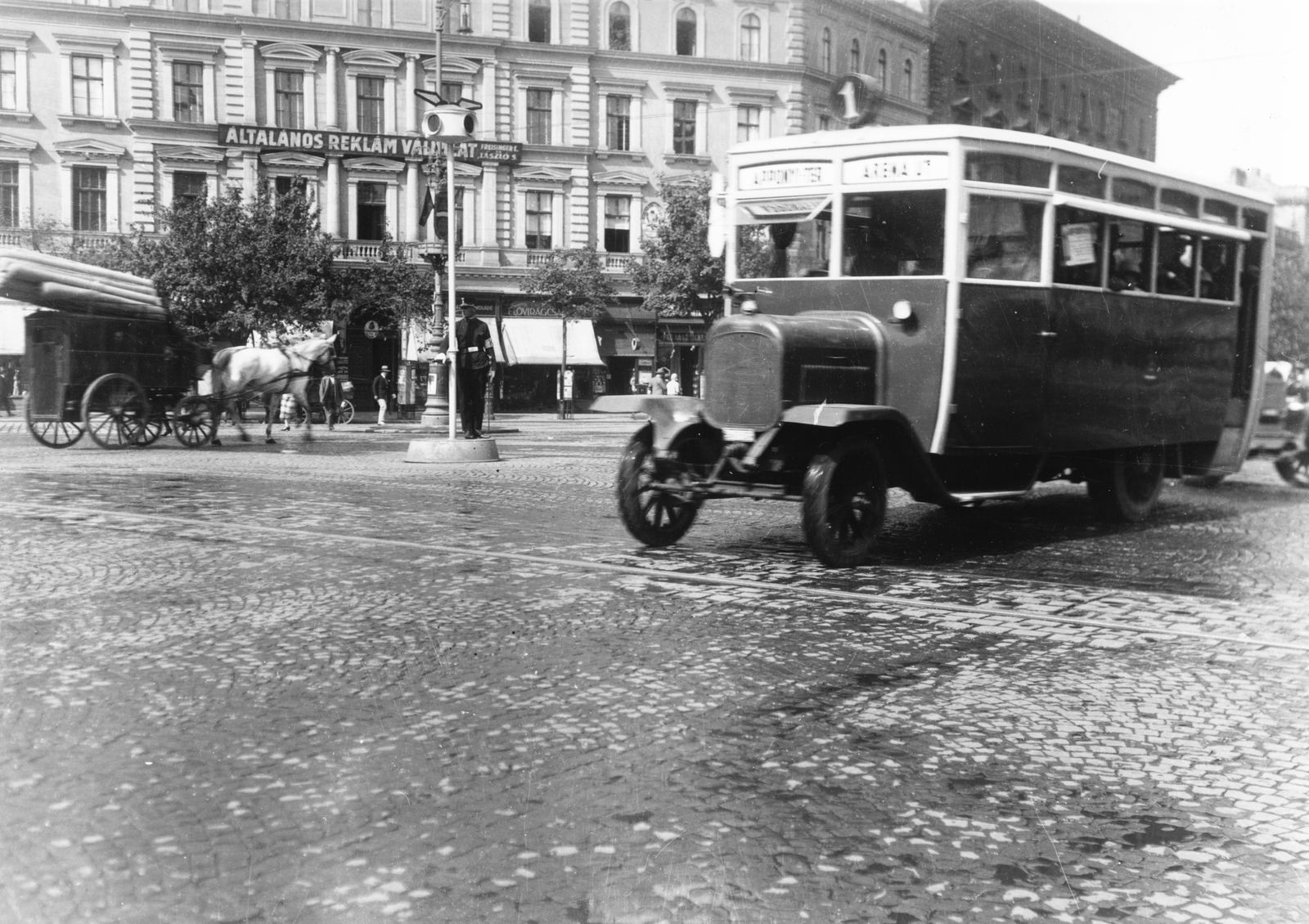
Traffic lights appeared in more and more places. The lights were turned on by a police officer because they were afraid the traffic signal would not be heeded without a police officer (Photo: Fortepan/No.: 24112)
Therefore, new ways had to be found in the world to regulate and direct traffic. It was the job of the police to maintain order on city roads, but in a larger intersection, it was not such an easy task. As early as 1868, in London, long before the cars, a structure appeared, a gas lamp mounted on a pole, which a policeman adjusted with a long stick. The experiment was an explosive success, literally, as the lamp exploded a month after it was put into operation.
Citizens had to wait for the first electrically operated traffic light until 1912, and then a few years later, an automatic lamp with a timer appeared, all in the United States.
In Hungary, similar equipment was needed only after World War I. It was not until 1926 that the car traffic in Budapest became so dizzying that such equipment had to be installed, namely in Blaha Lujza Square. It is true that this lamp was not switched on by a watch, but by a police officer (automatic lights only appeared in Hungary in the 1960s, not because of a technical backlog, but because the authority was of the opinion that motorists would disregard the equipment without a police officer). We were not far behind the other European capitals, the traffic lights did not appear in Berlin until 1924.
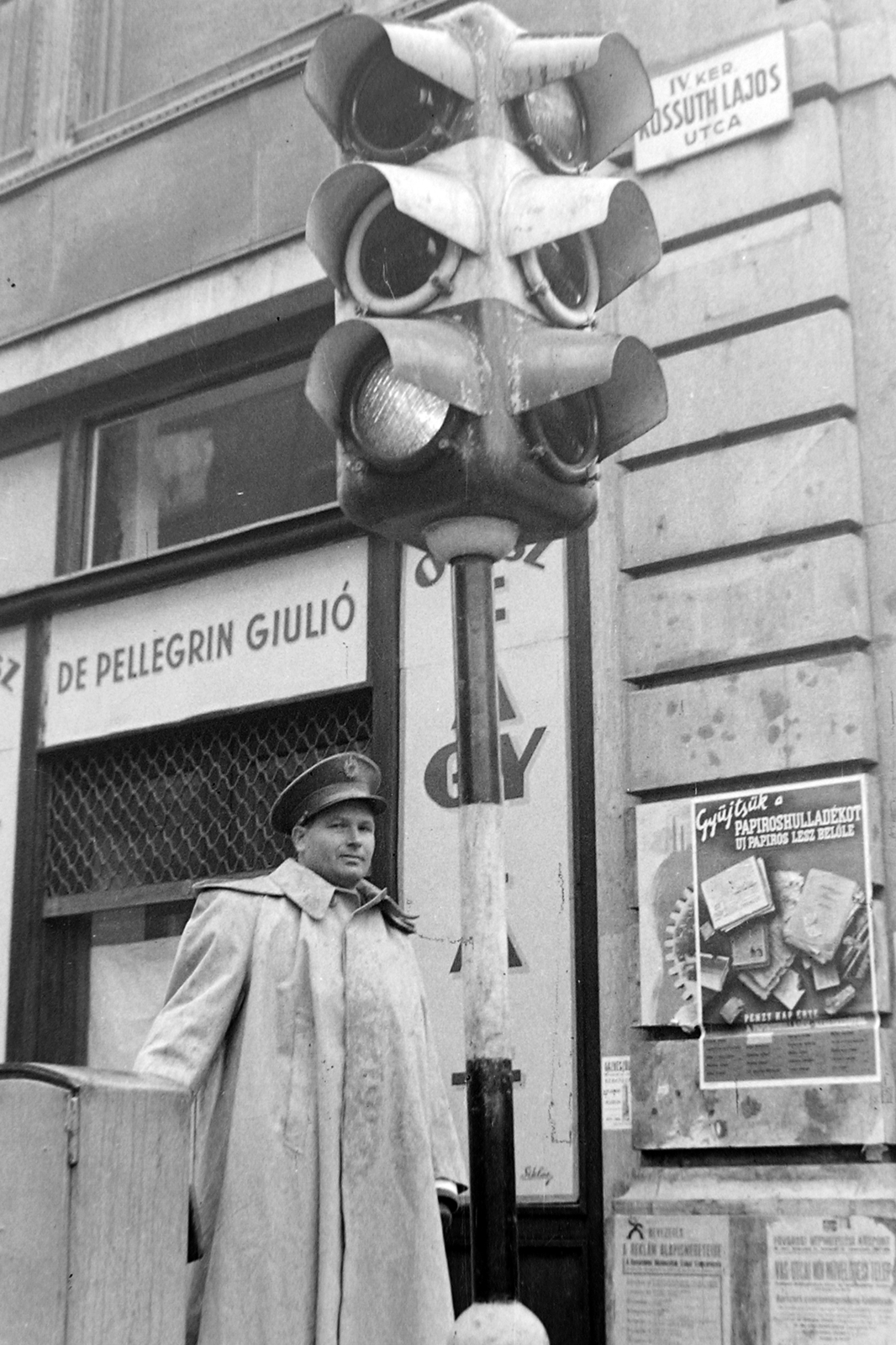
The policeman stood by the lights for a long time, this picture was taken in 1948 (Photo: Fortepan, Magyar Rendőr)
The lamp looked a little different than it does today, it was hung on cables towards the intersection, controlled by a policeman standing on a small podium in the middle of the intersection with the help of a rod.
The lamp was put into operation on 23 December 1926. The Pesti Napló wrote about this on Friday, 24 December 1926:
“Around 11:30 am on Thursday, the people of BESZKÁRT, led by an engineer, appeared at the intersection of Rákóczi Road and the Outer Ring Road and they have begun work on the installation of the traffic light. The coloured glasses were placed, bulbs were screwed in, and finally, a long rod with a handle at the end was inserted into the centre of the lamp. The engineer stood up on the platform under the lamp, pulled the handle of the hanging rod once, and the two glasses on the ring road overlooking Boráros Square and Berlin Square were green, while the two glasses facing Rákóczi Street were red. This meant that traffic could move on the ring road, while all traffic from Rákóczi Road was stopped. According to the Chief Captain's Decree, not only means of transport but also pedestrians must adapt to the signalling of the lamp."
That is, there was no separate pedestrian light. As a rule, cars had to stop at the red so that pedestrians could pass in front of them. Pedestrians could only cross straight at the intersection, parallel to the road.
The light has become a spectacle, though it is reported that the yellow sign bothered motorists the most. In addition, the first day, there was a malfunction, all colours lighted at once. Of course, the people of Pest immediately made a joke of the suffering traffic light.
Pedestrians did not really follow the rules at first, they passed despite the red signal. The police, of course, did everything they could to call upon the traffic to the new order, although at first they were not fined, they were just warned. The fine could have been up to 500,000 crowns anyway. At first glance, this seems like a large amount, but at that time it was quite significant inflation, at today's value it amounted to roughly 30,000 forints.
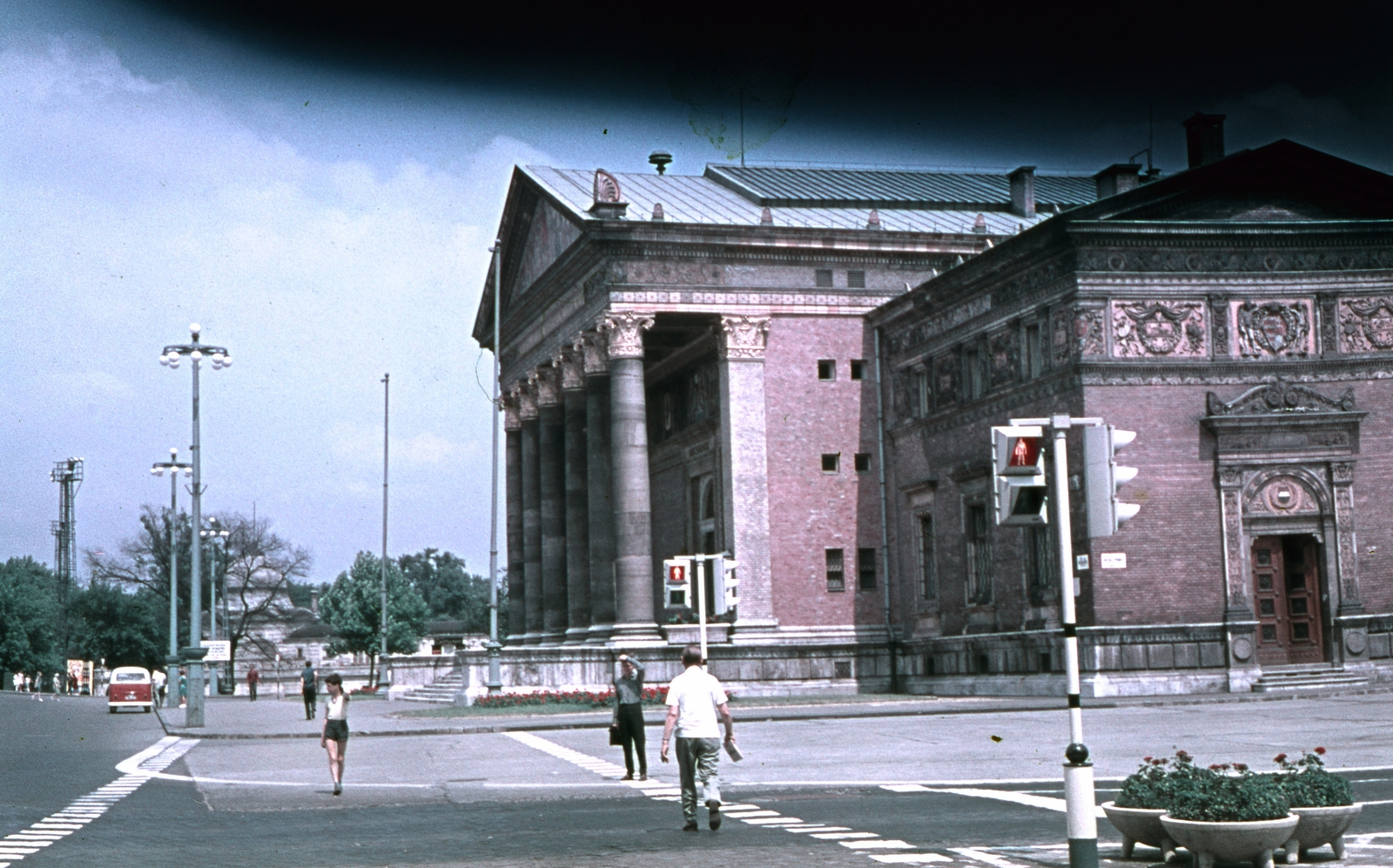
For a long time, pedestrians did not have their own traffic light, but had to look at the “big” lamp. (Photo: Fortepan/No.: 75643)
The lights soon proved their worth and appeared in more and more places. Later, it was no longer necessary to have a separate police officer for each light, but all the lights of the intersection were switched from a central pillar by a police officer, and from 1943 on, they tried to create a green wave on Szent István Boulevard.
Cover photo: An automatic traffic light in 1934 on Lipót Boulevard (Photo: FSZEK Budapest Collection)

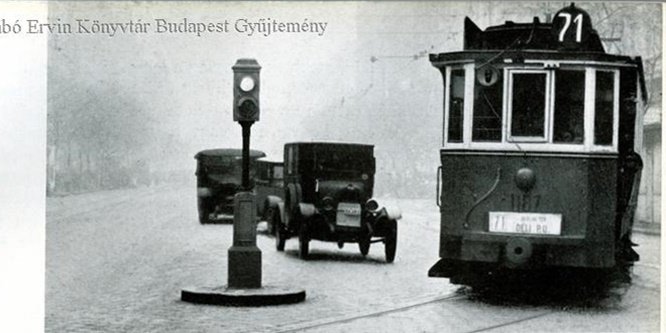


































Hozzászólások
Log in or register to comment!
Login Registration